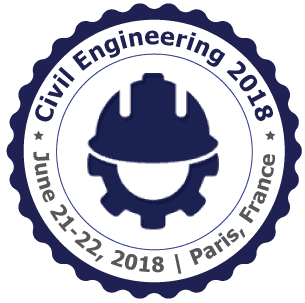
Hamed Rahman Shokrgozar
Hamed Rahman Shokrgozar, Maryam Zare Aghblagh University of Mohaghegh Ardabili, Ardabil, Iran
Title: The Effect of Beam-Column Connections and Soil on the Seismic Behavior of Intermediate Steel Moment-Resisting Frames
Biography
Biography: Hamed Rahman Shokrgozar
Abstract
Soil-structure interaction expresses the difference of structural responses between the actual and theoretical rigid based conditions, and depends on the stiffness, mass and damping of soil and structure systems. Nowadays, moment-resisting frame is one the most common structural systems. Ductility of these frames is due to the flexural yielding of beams, columns and the shear yielding of panel zone of columns. The influence of modeling beam-column connections and soil-foundation-structure interaction on the seismic responses of 10-story intermediate steel moment-resisting frames that located on the two various soil types (II and IV) is studied in this paper. Prequalified welded flange plate connections (WFP) are used in these buildings. For this purpose, several 2D finite element models are developed using OpenSees software by assuming three conditions such as models with considering soil and beam-column connections effects, models with considering soil and without connections, models with fixed based and without considering connections. The maximum responses of the studied frames are calculated and compared with nonlinear time-history dynamic analyses under seven far-fault earthquakes. The numerical results show that in the models located on soil type IV, considered connections, SFSI, or just soil, the maximum lateral displacement and maximum inter-story drift are more, compare to models without connections and with fixed based conditions. In the models rested on soil type II, some of these parameters are reduced. The maximum base shear of structures is reduced in the mentioned models.

